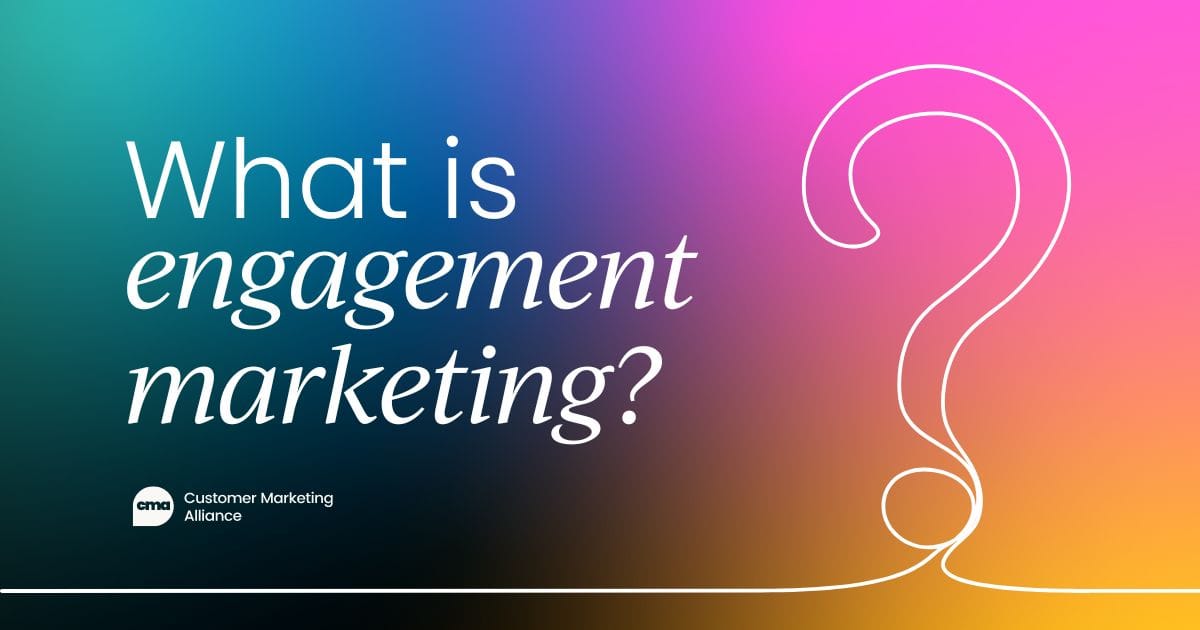Let's be clear: Customer onboarding isn't just the responsibility of customer success. Yes, customer success teams are the main point of contact and are the ones who first and foremost guide a new customer through the process. But they're not the only team with a stake in the game.
Truly customer-centric companies involve their customer marketing teams, too. There are opportunities aplomb
Here's how customer marketing managers can actively impact the onboarding process and why it’s pivotal to long-term success.
What is customer onboarding?
Customer onboarding is the structured process of guiding new customers from their initial purchase to successful product adoption, helping them understand, implement, and gain value from your solution
In order for your business to be successful, your customers need to be set up with the right support and knowledge.
Onboarding isn’t just an operational phase – it’s the launchpad for future engagement and advocacy.
For customer marketing managers, a seamless and well-optimized onboarding process sets the tone for every interaction to follow, creating a foundation that can drive loyalty, reduce churn, and spark genuine advocacy.

There’s no room for the old-age view that prioritizes sales at all costs. A well-thought-out customer onboarding plan can help organizations maintain their relationships with their customers, whilst helping the customers get maximum value from the product.
Good onboarding breeds satisfied customers, which, in turn, produces advocates who'll shout your brand's name from the rooftops.
Customer onboarding is the systematic process of guiding new customers through your product's features, functionality, and value proposition. While it begins with the first interaction, effective onboarding is an ongoing journey into customer education and engagement that extends well beyond initial sign-up.
Key elements of a successful customer onboarding process
- Educational guidance on core features and functionality
- Strategic introduction of advanced capabilities
- Proactive support and friction reduction
- Contextual tips and tutorials
- Continuous value demonstration
The key isn't just getting users started – it's empowering them to achieve their goals through your product.

How customer onboarding can deepen engagement from day one
Traditionally, customer marketing has been seen as something that picks up after onboarding, with most people assuming that onboarding is solely the realm of customer success.
But here’s the thing: customer marketing and customer success are two sides of the same coin. When customer marketers actively collaborate on onboarding, they set the foundation for everything that follows – engagement, retention, and advocacy.
When customer marketers align from the start, they help craft an onboarding experience that resonates with customers, reinforces key product benefits, and turns new users into loyal advocates faster.
This is more than just collaboration – it’s a revolutionary shift. Customer marketers aren’t just stepping in after onboarding; they’re there from the beginning, shaping the customer journey at every touchpoint and maximizing long-term value for both the customer and the company.

Set the foundation for engagement campaigns
Onboarding is the customer’s first real experience with the product, making it the perfect stage to establish a baseline of understanding and satisfaction. When customer marketing managers closely collaborate with their CS team, they gain insights into common onboarding pain points and successful touchpoints.
This understanding enables customer marketing to shape ongoing engagement campaigns and future customer communication that address and reinforce key messages introduced in onboarding.
For instance, if onboarding data shows that customers frequently overlook a key feature, customer marketing can develop targeted email nurture campaigns, videos, or content resources to highlight this feature.
This adds a sense of continuity and increases customers’ confidence in using the product, ultimately setting up future engagement efforts for success.
Use data-driven insights on your customer journeys
Onboarding data is a goldmine for shaping lifecycle and retention programs. Analyzing where customers encounter difficulties or experience smooth onboarding, allows customer marketing managers to develop segmented, personalized communication.
For example:
- Customers who encounter challenges might receive follow-up guides, targeted troubleshooting resources, or direct offers for support.
- Customers who breeze through onboarding can be nudged toward advanced features, product certifications, or early access to advocacy programs.
These tailored approaches lead to more relevant, meaningful interactions and increase the likelihood of engagement throughout the customer lifecycle.

Content collaboration and consistency
While CSMs are the sole leads on onboarding communication, customer marketing managers can offer invaluable support by creating supplementary content that reinforces onboarding objectives.
Onboarding is the time for customer marketers to let their educational side run riot by producing resources like webinars, self-service guides, and tips. This role ensures consistency in messaging, enhancing customer confidence without overwhelming them.
Identify advocates early on
"The early bird catches the worm" and all that.
Tracking onboarding satisfaction and product adoption data must be a priority for customer marketers, as it's a handy way to identify early adopters or standout users who exhibit high engagement or rapid success. These customers can then be invited into advocacy programs or encouraged to participate in case studies, community forums, or peer-led initiatives.
Identifying advocates at the onboarding stage, allows customer marketers to set the stage for a more organic growth of champions and customer-driven promotion efforts. Engaged advocates, in turn, contribute to word-of-mouth marketing and strengthen brand loyalty, reinforcing the value of a strong onboarding foundation.
A feedback loop for continuous improvement
For customer marketing managers, there's a treasure trove of customer onboarding insights for the taking. The data collected during onboarding can be instrumental in efforts to refine engagement and retention strategies.
The ticket here is to closely align with customer success to provide a constant feedback loop, allowing customer marketing to detect trends, address content gaps, and introduce campaigns that tackle unmet needs.
This holistic approach ensures that all stages of the customer journey – from onboarding through to engagement and advocacy – feel cohesive, interconnected, and, most importantly, customer-centric.

Why optimizing customer onboarding is key to customer marketing success
A well-designed onboarding process is essential for customer marketing success over the long term. Here’s why:
- Customer retention: A smooth onboarding process drastically reduces the chances of customers leaving early. Instead, it keeps them engaged with your product.
- Customer advocacy: A positive onboarding experience builds trust and satisfaction, paving the way for future advocacy and referral opportunities.
- Customer engagement: Effective onboarding aligns customers with the value of a product from the start, making it much easier to engage them down the line with new features, advanced usage tips, and personalized communication.
- Efficient campaigns: When onboarding pain points are addressed early on, customer marketing campaigns are more targeted and efficient, with a clear understanding of customer needs and a framework for nurturing ongoing success.
Why is customer onboarding important?
When customer marketing is properly adopted in organizations, it can have a real impact on revenue.
In our State of Customer Marketing 2024 report, Louise Domeisen, Customer Marketing Manager (Advocacy) at Redgate Software, gave some insights into the relationship between onboarding, revenue and customer marketing:
"As a subscription-based business, the impact my wider team has on customer onboarding and their journey to seeing value from their products is essential.
"We all know the cost of bringing in new customers, so by keeping our existing customers happy and building that trust with us, not only do we combat churn, we open up opportunities to expand and cross-sell with that customer account.
"Customer marketing, whether advocacy, onboarding, or education, has the most cost-effective ROI within a marketing division. Our outgoing costs are minimal, but the revenue impact is massive both for maintaining existing and attracting new customers.”
Want to learn more?
Customer marketing is and always will be a customer-centric role. A core part of your job is to value the voice of the customer and advocate for their wants, needs, and pain points. It’s your responsibility to make them feel heard.
Therefore, customer marketing is an integral part of what you need to do to ensure that you’re staying true to this.
Customer Marketing Certified: Core is a certification designed to give you invaluable, practical insights into streamlining your customer marketing approach so that you can ensure that:
- Your customers are happy,
- Your products are the best they truly can be,
- Your brand reputation is consistently positive, and
- That you bring in increased revenue for your organization.
So what are you waiting for?


 7 min read
7 min read
 Follow us on LinkedIn
Follow us on LinkedIn




